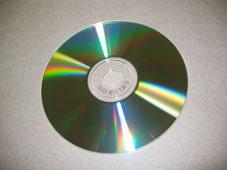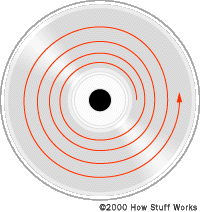
The Compact Disc
In 1984 a revolutionary new way of storing data was invented; using optical storage technology the compact disc (CD) was born. Using a laser beam to read states at near microscopic size on a plastic disk of 12cm diameter, this means they have a high storage to size ratio and can hold 700mb. Standard CD’s are read only.


A standard cd is made of three layers (left diagram), a polycarbonate base through which light can pass, a layer of aluminium, and a protective layer of acrylic on top of that. The raised bits are called pits (right diagram).
Developed in 1988 and
released in 1994 the CD-R is a user writable CD, in that before now only CD
producing companies such as Microsoft or record companies could produce cds.
Instead of physical pits CD-R’s use a special dye and a powerful laser, the
laser lowers the refractive index of the dye which when read by the laser reacts
the same as a physical pit. The size of CD-R’s has remained unusually constant
for storage technology constant with just one increase from 650 to 700mb,
however the speed at which discs can be created has steadily increased from 1x
to currently 54x. This is due to new improved dyes, dye application methods and
increasing the stability of the CD at higher RPMs. In 1995 the CD-RW was
developed, this allows the data on CDs to be erased and rewritten thousands of
times. However CD-RWs around four times the price of CD-Rs and can only be at
lower speeds, they also need to be erased prior to writing. They cannot be read
by pre 1997 CD drives due to a lower reflectance. This means CD-Rs are much more
popular than rewritable’s which are rarely used.
A CD The radial pattern of pits
The radial pattern of pits